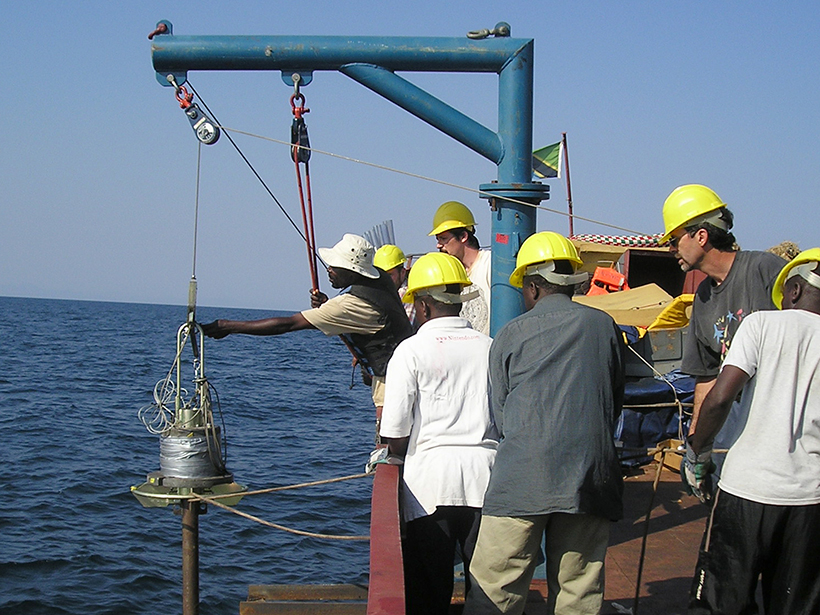Source: Paleoceanography and Paleoclimatology
A translation of this article was made possible by a partnership with Planeteando. Una traducción de este artículo fue posible gracias a una asociación con Planeteando
When it comes to climate modeling, understanding the past is critical to predicting the future. Scientists use all manner of materials to reconstruct Earth’s past climate. Tree rings, ice cores, corals, bat guano, and even whale earwax can reveal clues about historical conditions.
Among the various climate reconstruction strategies currently in play, lake sediments stand out for their completeness and continuity. The deposits lining lake basins supply a trove of data on changes in air temperature, water temperature, and hydrology. The global lake data record spans hundreds to thousands of years; in some regions, lake sediment archives offer a cohesive view of lacustrine conditions dating back to the Last Glacial Maximum, approximately 21,000 years ago.
Unfortunately, paleoclimate data, like those scrounged from debris at the bottom of a lake, do not always produce a clean and coherent signal. Climatic variables like temperature and precipitation can often be masked and hard to constrain. In turn, such data are more difficult to incorporate into climate models, so scientists use proxy system models to translate climate model data into the same reference frame as paleoclimate data. This translation puts the two data types on a level playing field for an apples-to-apples comparison. These translations are essential for improving the physics that underpin climate forecasts.
In a new study, Dee et al. detail the first comprehensive proxy system model for lake archives, called PRYSM (Python, Proxy System Modeling). The model describes several components of a lake’s history, including the energy balance and hydrology of the system, the accumulation of leaf waxes or other physical and biological deposits, and sedimentation and compaction at the bottom of the water body. PRYSM also provides an accounting of errors in data sampling, dating, and analysis.
To validate the model, the authors used the Paleoclimate Modelling Intercomparison Project Phase III (PMIP3) to simulate the 20th century conditions in two African lakes, Lake Malawi and Lake Tanganyika. They then compared the results to data in the field. The comparison between the simulated and real-world data revealed that lake systems exert a confounding influence on the climate signal of interest (e.g., air temperature). For instance, the results showed that lake surface temperatures respond differently than air temperatures to changes in mean climate; therefore, changes in lake temperature may not adequately reflect changes in air temperature. The revelation has far-reaching implications for understanding how lakes may respond to human-caused climate change.
The lake model promises to improve interpretations of past climatic conditions and predictions of the future climate. The model will also help researchers answer questions like, What percent change in precipitation is needed to simulate a 150-centimeter change in lake level over 100 years?
PRSYM, now in its second version, is the first step toward a larger distribution platform for lake sediment data and proxy system models that describe them. Eventually, the authors envision a fully operational platform that can serve as a research tool and resource for the entire paleoclimate community. (Paleoceanography and Paleoclimatology, https://doi.org/10.1029/2018PA003413, 2018)
—Aaron Sidder, Freelance Writer
Citation:
Sidder, A. (2019), Translating climate models to the language of paleoclimate data, Eos, 100, https://doi.org/10.1029/2019EO124475. Published on 24 May 2019.
Text © 2019. The authors. CC BY-NC-ND 3.0
Except where otherwise noted, images are subject to copyright. Any reuse without express permission from the copyright owner is prohibited.

